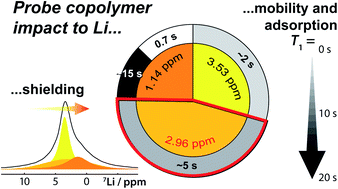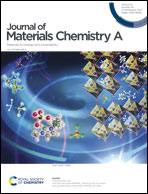Investigation of low molecular weight sulfur–limonene polysulfide electrodes in Li–S cells†
Abstract
The use of inverse vulcanized copolymeric electrodes have typically provided favorable effects on one the most challenging aspects of Li–S cell chemistry, the capacity retention. Unfortunately, it is not clearly understood which properties of the material are responsible for this effect. A lack of understanding as to which aspects of the copolymer are beneficial or detrimental to Li–S cell function gives rise to certain challenges in comparative studies and in justifying further development of inverse vulcanized copolymers. This work sheds light on understanding function by providing a detailed multi-scale structural and lithiation picture of poly(S-r-limonene), a material demonstrated to show superior areal capacity and long cycle lifetimes. X-ray powder diffraction (XRD) is used to characterize the crystalline sulfur phases within the material, solid-state NMR to selectively monitor lithiation and local structure evolution of the hydrocarbon crosslinks and K-edge X-ray Absorption Near Edge Structure (XANES) spectroscopy to provide insight on the speciation of interfacial moieties. In poly(S-r-limonene), effective Li–S capacity retention appears to rely on its low molecular weight and close proximity between the aromatic, alkene, and aliphatic functionalities. Comparisons to other copolymeric electrode materials studied using this approach reveal clear differences in lithium mobility based on the hydrocarbon functionalities present in the copolymer. Such insight provides opportunities for rational design of tailored copolymeric systems to maximize Li–S cell capacity retention.



 Please wait while we load your content...
Please wait while we load your content...